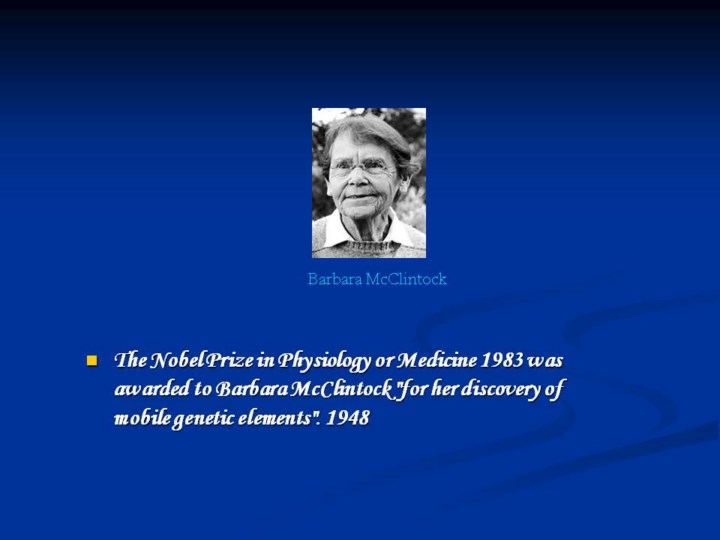 |
The first
TEs were discovered in maize (Zea
mays),
by Barbara
McClintock in 1948, for which she was awarded a Nobel
Prize in 1983. She noticed insertions, deletions,
and translocations,
caused by these elements. These changes in the genome could, for example,
lead to a change in the color of corn kernels. About 85% of the genome of
maize consists in TEs.[6] The
Ac/Ds system described by McClintock are class II TEs. ransposons in bacteria usually
carry an additional gene for function other than transposition---often for antibiotic
resistance.
The most common form of transposon in humans is
the Alu
sequence. It is approximately 300 bases long
|
